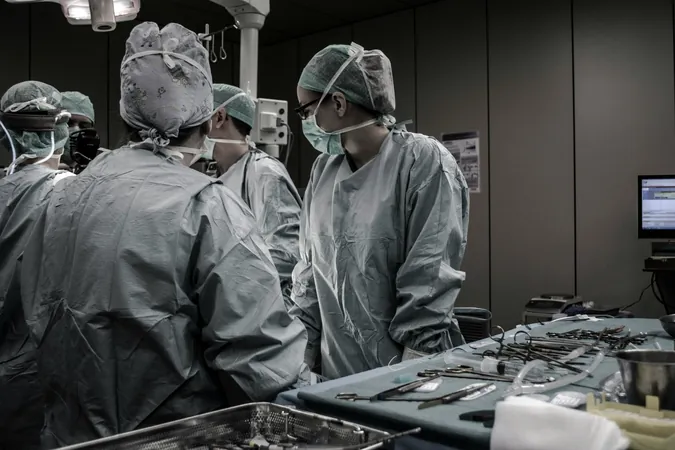
Breakthrough in Treating Chronic Subdural Hematoma: A Game-Changer for Neurosurgery?
2024-11-22
Author: Mei
Recent research from the Society of Neurointerventional Surgery (SNIS) has revealed groundbreaking results regarding the treatment of chronic subdural hematoma (CSDH) using a technique known as middle meningeal artery embolization (MMAE). This minimally invasive procedure has been found to reduce the risk of treatment failure significantly compared to traditional treatment methods, with no increase in the incidence of severe stroke or mortality in the short-term.
The Squid Trial for the Embolization of the Middle Meningeal Artery for the Treatment of Chronic Subdural Hematoma (STEM) has recently published its final results in the New England Journal of Medicine, demonstrating that adjunctive MMAE can decrease the overall failure rate of CSDH treatment from 36% to an impressive 16%. These findings come at a crucial time as CSDH is becoming one of the most common neurosurgical conditions among the aging U.S. population.
CSDH occurs when blood accumulates gradually over the brain's surface, primarily affecting older adults and resulting in a substantial morbidity and mortality rate. Conventional treatment approaches, including drilling holes in the skull, often lead to high failure rates—10% to 30% recurrence after surgery—which is particularly problematic for elderly patients whose surgical options are limited.
The MMAE procedure is highly innovative, utilizing small catheters inserted into blood vessels in the arm or leg, navigating them to the middle meningeal artery where liquid agents are injected. These agents then solidify, effectively blocking the arteries and halting the chronic bleeding. This approach has only recently emerged since the start of the MMAE adjunctive treatment in 2018.
Dr. Adam Arthur, the former president of SNIS, and Dr. David Fiorella have played pivotal roles in advancing this research, emphasizing the significant benefits that MMAE can provide to CSDH patients. Dr. Fiorella remarked, "The final results of STEM demonstrate the positive impact that adjunctive MMAE can have in the lives of CSDH patients, giving them the best possible odds of a successful treatment."
However, while these findings are promising, it's important to note that the MMAE method is still in an investigational phase, with no current FDA clearance for the use of the liquid embolic agents employed in the procedure. Regulatory reviews for these agents are underway.
"This treatment represents a major shift in the management of this disease," stated Dr. Arthur. As work continues in developing and validating such minimally invasive interventions, many experts express the potential for a broader application of MMAE and hope for a future where elderly patients can experience improved outcomes and quality of life.
With CSDH set to become increasingly prevalent as the population ages, the call for a reconsideration of treatment protocols to include innovative methodologies like MMAE could pave the way for a more effective approach to managing this significant health concern. As the field progresses, more studies are anticipated, promising exciting developments in neurosurgery.
Stay tuned as we follow the evolution of this life-changing treatment that could redefine the surgical landscape for chronic subdural hematoma!



 Brasil (PT)
Brasil (PT)
 Canada (EN)
Canada (EN)
 Chile (ES)
Chile (ES)
 España (ES)
España (ES)
 France (FR)
France (FR)
 Hong Kong (EN)
Hong Kong (EN)
 Italia (IT)
Italia (IT)
 日本 (JA)
日本 (JA)
 Magyarország (HU)
Magyarország (HU)
 Norge (NO)
Norge (NO)
 Polska (PL)
Polska (PL)
 Schweiz (DE)
Schweiz (DE)
 Singapore (EN)
Singapore (EN)
 Sverige (SV)
Sverige (SV)
 Suomi (FI)
Suomi (FI)
 Türkiye (TR)
Türkiye (TR)